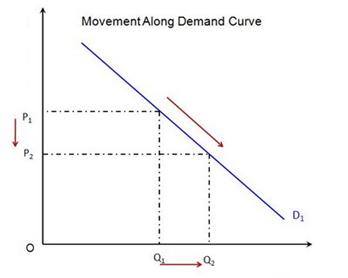THE ESSENTIALS OF ECONOMICS - DEMAND #1
Hello steemians, Welcome to the new edition of my blog post in this series you will be learning about the meaning of demand, schedule, shift and changes in demand, elasticity of demand, supply and determinant of price. Let’s begin with demand.
DEMAND
1. The meaning of demand
The demand of any goods or services is the amount that will be bought at any given price per unit of time. Demand is usually related to price, for demand is meaningless without implying or giving the price.
2. A demand schedule
This is table which gives the amount of a commodity demanded at various prices. For example ,The demand schedule shows that if the smith family are willing to pay Jane to babysit for 45 hours per month at the rate of $4 per hour, but only 18 hours per month at a rate of $11. The lower the price the higher the quantity demanded. If the table is shown graphically, the demand curve slopes downwards from left to right. The Smith family is one buyer, so economists consider their demand schedule an individual demand schedule.
A DEMAND SCHEDULE
An illustration of demand schedule : Source Credit
An illustration of demand schedule : Source Credit
3. The Determinants of demand
The amount of a commodity bought will be determined by:
I. The price of the commodity – The higher the price the less the amount demanded.
II. The price of other goods – Especially the near substitutes of the commodity.
III. The income of the buyers and its distribution.
IV. Changes in population – This refers to total number population.
V. Changes in age distribution of population – There may be more children and hence increase demand for children goods.
VI. Changes in individual taxes and fashion.
VII. Fiscal measures – Taxes may be used to influence demand: either to increase or reduce demand.
*Do not be confused, the determinants of demand are also the factors that bring about changes in demand*.
4. A change in demand
A change in demand is related to a movement along the same demand curve. A fall in price brings about an extension in demand, while a contradiction in demand occurs when less is bought at a higher price. See the graph below.

An illustration of Change in Demand : Source Credit
When the price is OP, the quantity bought is OM2, but when price increases to OP2, there is a contraction in demand to OM1.
5. A shift in demand
This refers to actual movement of the demand curve. It is usually referred to as a decrease or increase in demand. This is caused by changes in the determinants of demand, not caused by price changes alone.

An illustration of Shift in Demand : Source Credit
6. The total demand curve
The shows the addition of all the demands of individuals for a particular commodity. Like individual demand curve, it also slopes downwards from left to right. It is often referred to as the total market demand curve.
7. Joint demand
This is the case when two or more commodities are required together at the same time. Example gramophone, records and needles. A gramophone is useless without a record and needles; hence, the three must be demanded.
8. Derived demand
There is a derived demand for a commodity if it is wanted as a result of the demand for another commodity. For example, there is a derived demand for ‘’garri’’ to satisfy the demand for ‘’eba’’ (cassava meal); there is also a derived demand for flour to satisfy demand for bread.
9. Composite demand
This is the total demand for a commodity which arises when it is required for different uses. This will be the sum of the different demands. Example, Cocoa is demanded for making cocoa beverage, cocoa bread and chocolate. The amount of cocoa demanded for making chocolate, for making cocoa bread and for making cocoa beverage forms the composite demand for cocoa.
ELASTICITY OF DEMAND
1. The meaning of elasticity of demand
Elasticity of demand means the degree of responsiveness of demand to changes in price, taste and fashion. It measures the degree of extension and contraction in demand owing to changes in price.
2. Measurement of elasticity
This is usually done in three ways:
i. Elasticity is equal to one or unit – This means that the proportionate change in demand is equal to the proportionate change in price.
ii. Elasticity is greater than one – The proportionate change in demand as a result of changes in price is greater than the proportionate change in price. Here demand is elastic.
iii. Elasticity is less than one – The proportionate change in demand as a result of changes in price is less than the proportionate changes in price. Here demand is said to be inelastic.
3. Factors determining elasticity of demand. These factors are:
i. The probability of substitution.
ii. The smaller the amount of income spent on a commodity, the more inelastic is the demand.
iii. The degree of necessity affects elasticity.
iv. Habit – i.e. the pattern of the consumer’s expenditure.
v. Goods which are classified as luxuries are very elastic in demand e.g. jewelry.
4. Uses of elasticity.
i. It enables producers to predict what the effects of a price change will have on demand.
ii. It enables the government to determine which goods the prices can be increased to obtain more revenue, If the price of an article whose demand is elastic, is increased, this may lead to a fall in revenue.
iii. The knowledge of elasticity enables a monopolist to increase the price of a commodity whose demand is inelastic. He can do this until the price becomes elastic.
I Hope you guys enjoyed it we will continue on our next topic on supply to be continued.
@originalworks